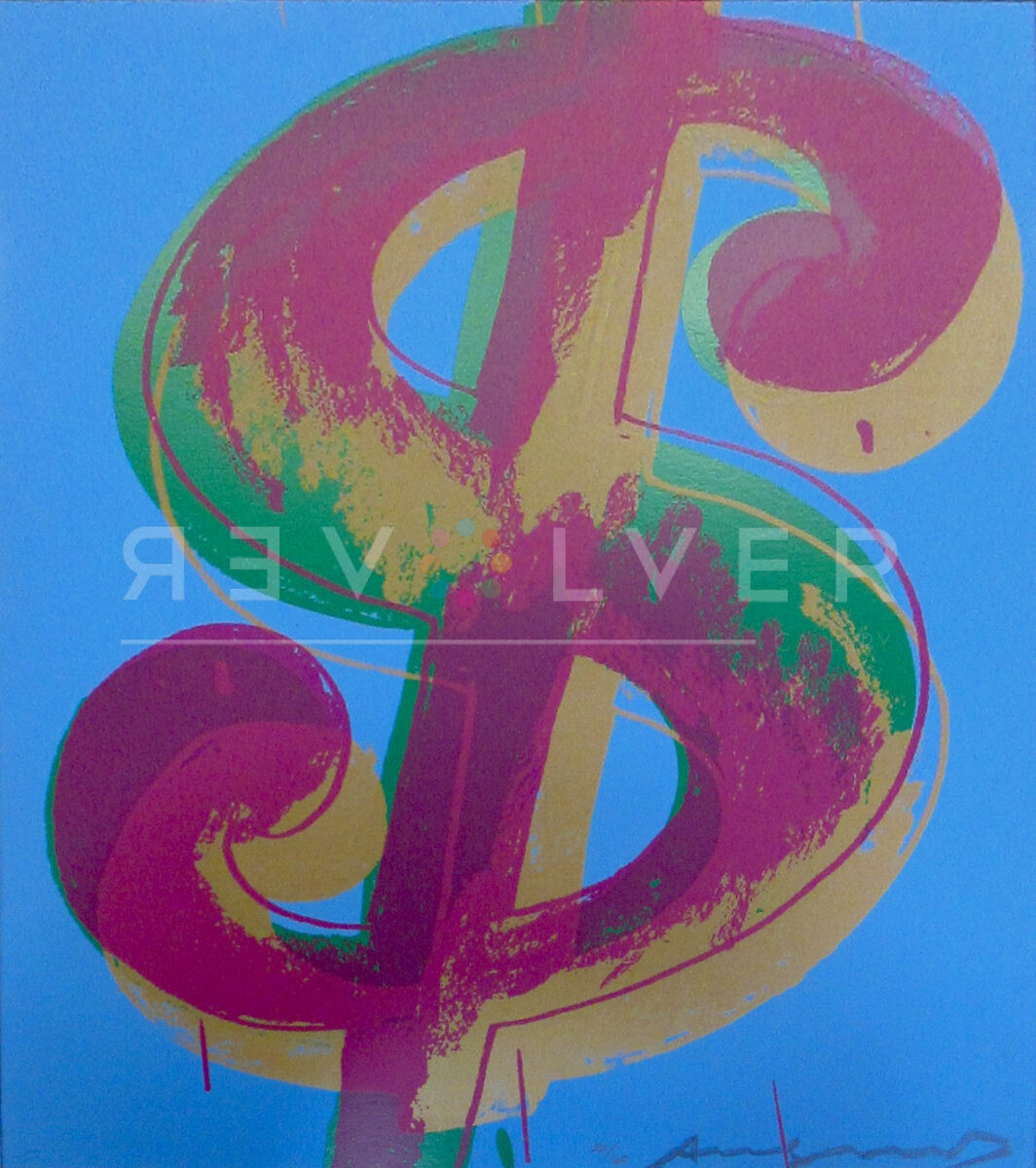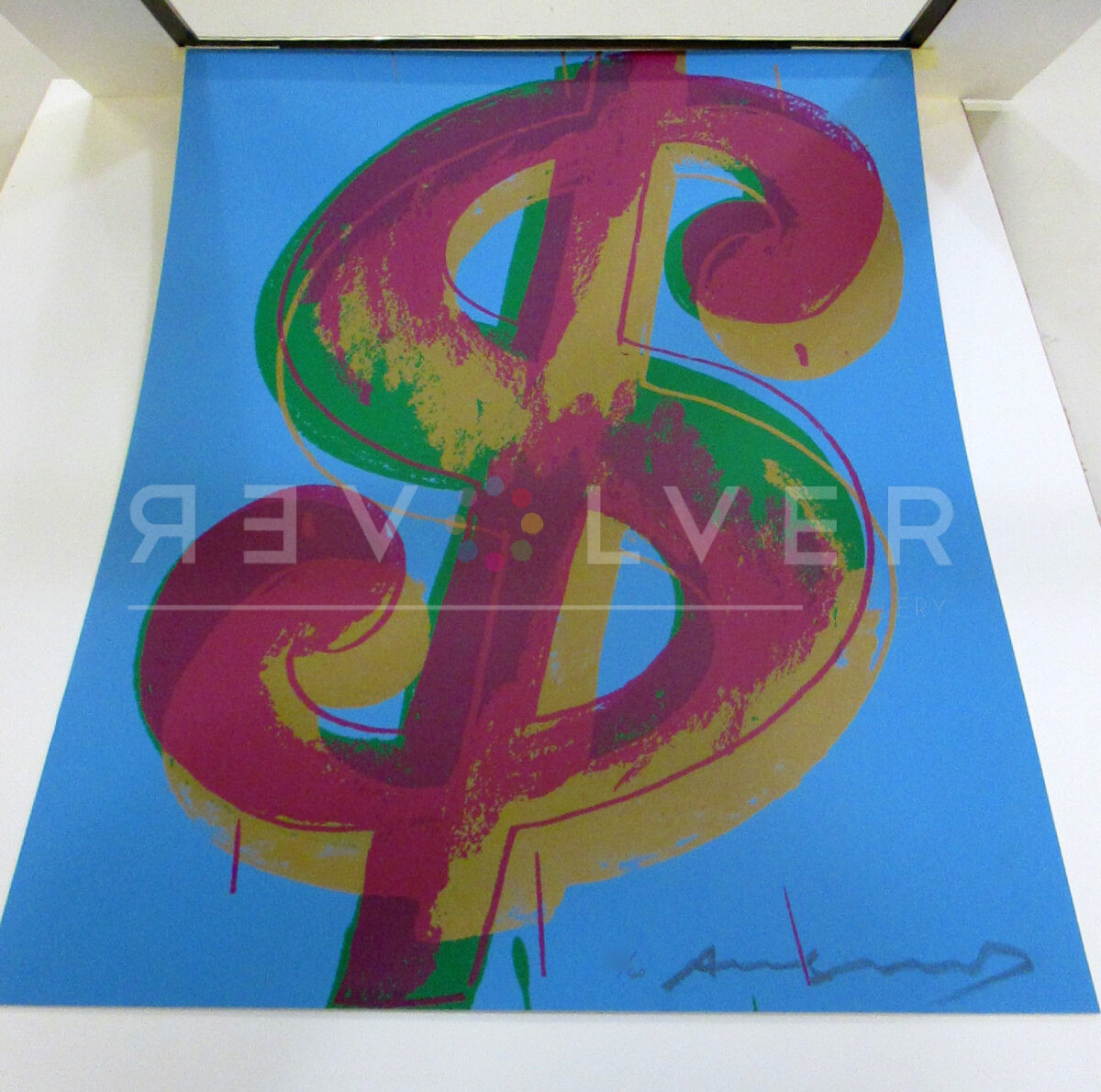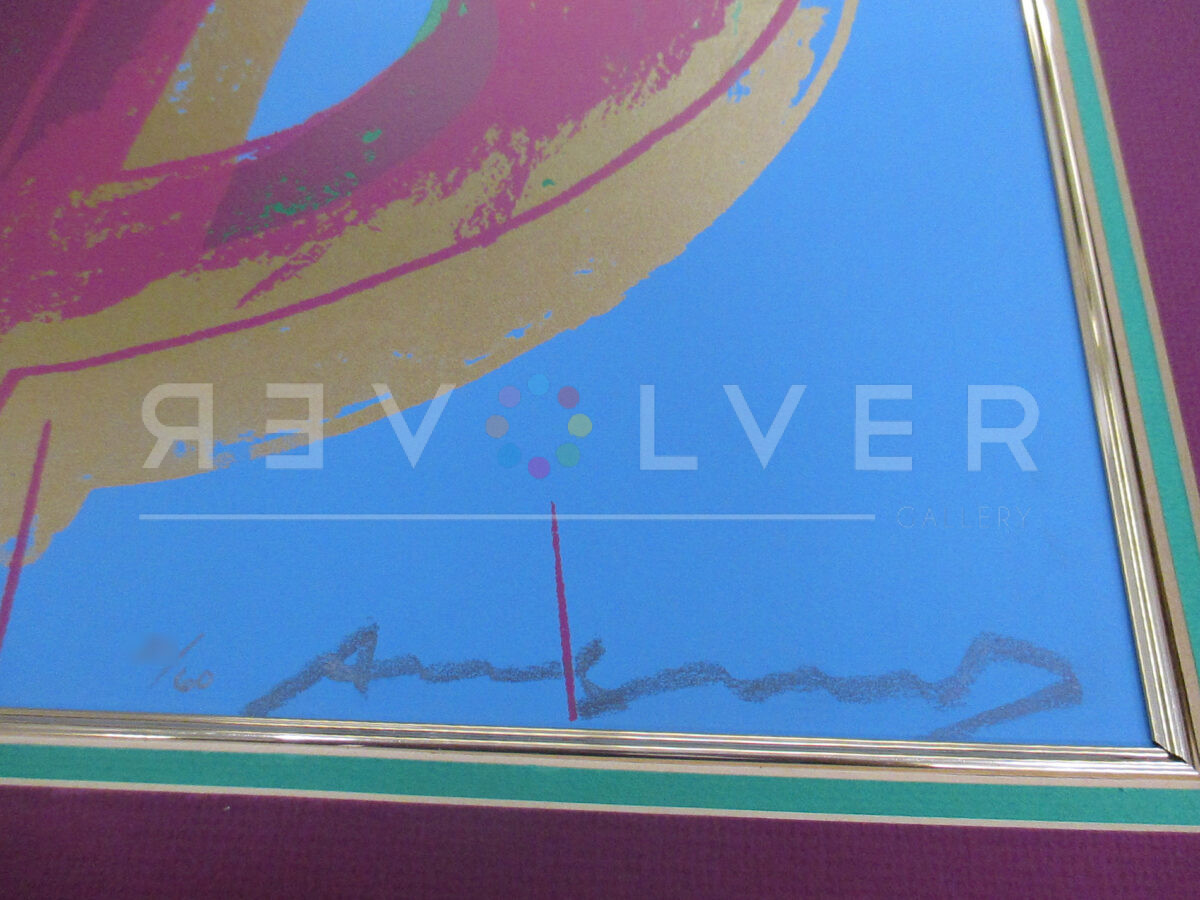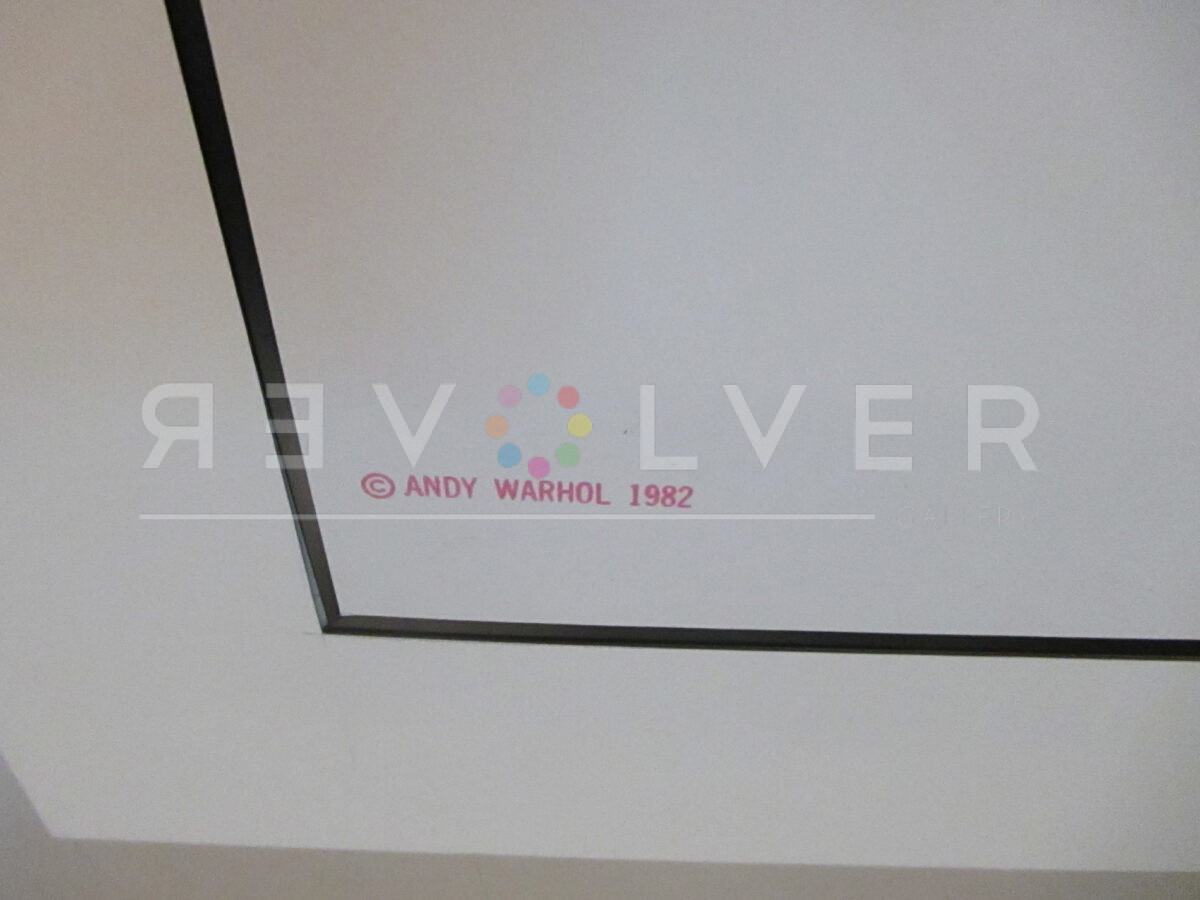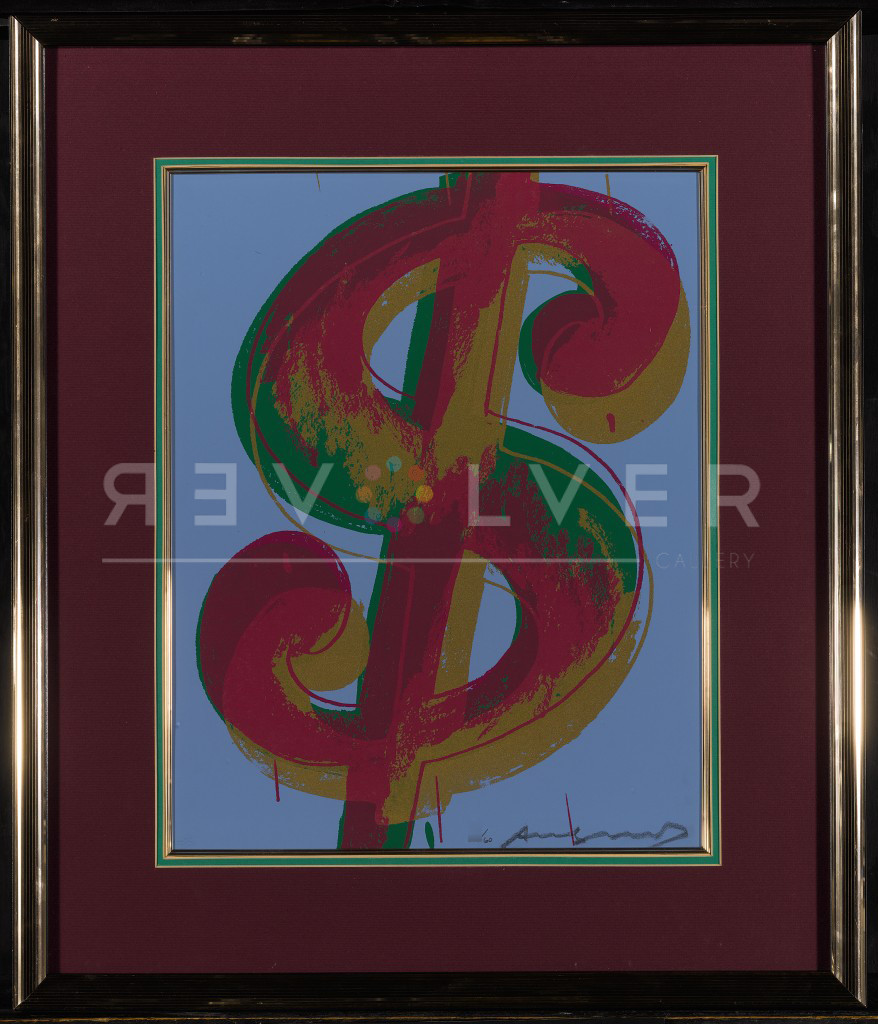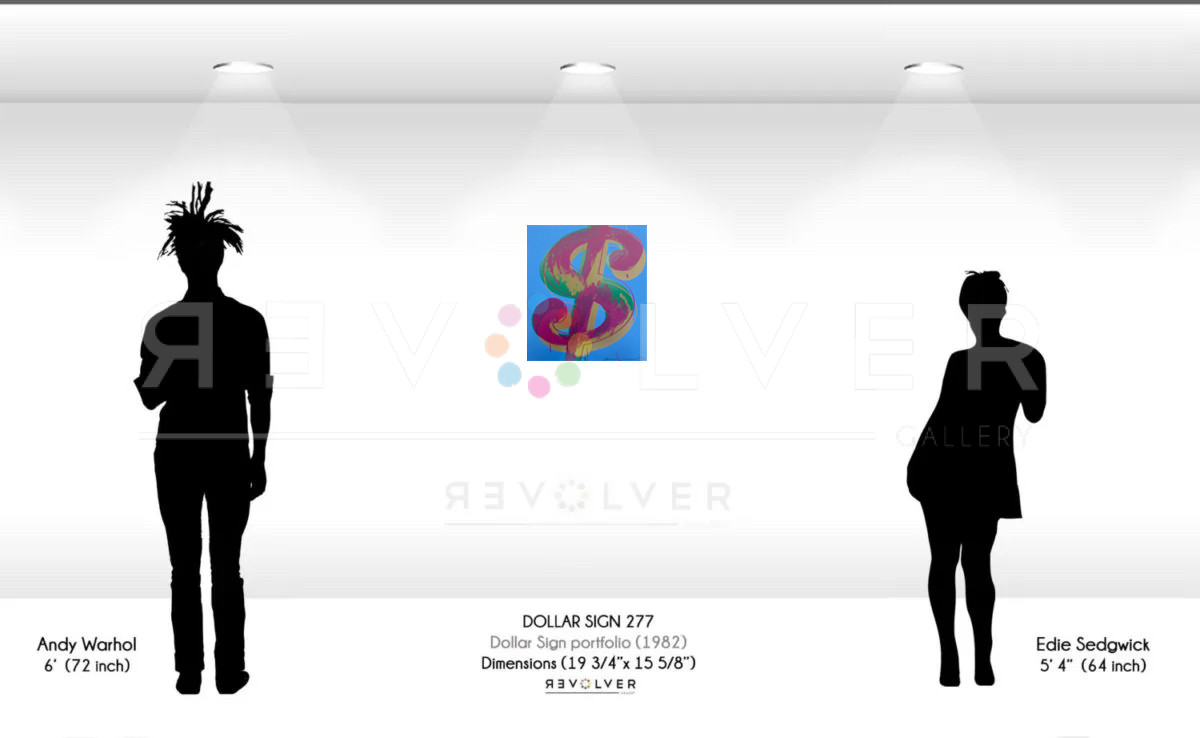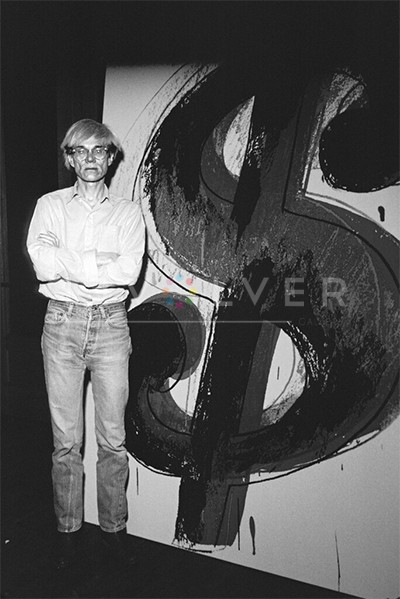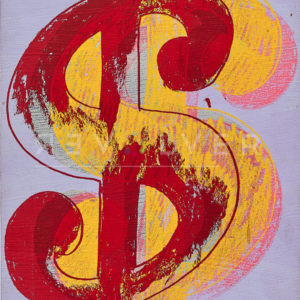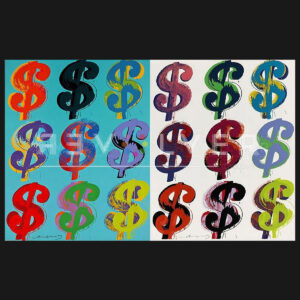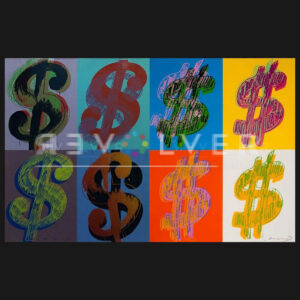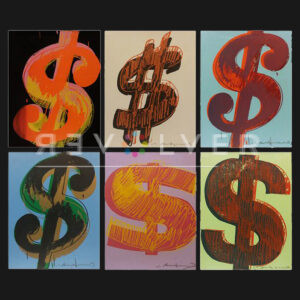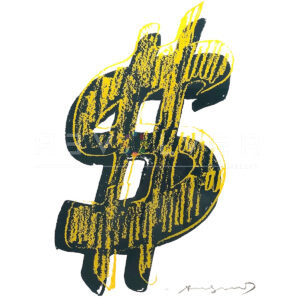Dollar Sign 277 by Andy Warhol is one of six screenprints from the Dollar Sign (1) portfolio. It is a classic Pop Art image: dramatic, neon colors bring one subject front and center to command the viewer’s attention. “Pop Art took the inside and put it outside, took the outside and put it inside,” Warhol once affirmed. To him, money and spending dominated modern culture yet many artists shied away from acknowledging it. The dollar sign itself, then, is a true Warholian symbol. He knew just how significant the concept of currency was to modern culture. Most importantly, Warhol celebrated money and business, likening them to a form of art.
To understand Warhol’s affection for money, it’s essential to reflect upon his early life and upbringing. Born to immigrant parents, Warhol grew up in Pittsburgh’s South Oakland neighborhood during the Great Depression. Luxuries weren’t often available to the Warhola family, and Andy even took free art classes offered at Carnegie Institute. Only when his father saved up enough money did Warhol get the chance to further his education. Moreover, he didn’t begin to make money until he moved to New York and began his career as a commercial artist. When he finally reaped the benefits of his entrepreneurship, Warhol fully enjoyed indulging in the experience. His favorite thing to purchase was underwear.
Like other works in this portfolio, Dollar Sign 277 uses rowdy complimentary colors to make a larger than life statement. Vibrant purple clashes against teal, orange and blood red, while the symbol itself takes up the entire space on the print. In addition, line drawings further emphasize the symbol’s stature while texture adds a sense of time to the piece. The symbol appears like a sign on the side of a building, the paint rusted; this implies that money and commodities have long had an impact on American life.
Unlike many of his other works, Warhol hand painted the source image for the Dollar Sign portfolio himself. Warhol liked to push boundaries, and there was nothing bolder than placing consumerism at the forefront of modern art. Like his Campbell’s Soup portfolio and Brillo boxes, the Dollar Signs were a true representation of daily life in a capitalist society.
“Buying is much more American than thinking,” Warhol claimed, “and I’m as American as they come.” Dollar Sign 277 perfectly represents this philosophy. Warhol never considered himself above American culture, but instead proudly proclaimed that he was an equal part of its fabric. For him, money was a way of life, the grease that kept the gears of modern society constantly in motion. Not to mention, art was just as much of a commodity as a can of soup. So why not say it?
Photo credit: Andy Warhol with Dollar Sign painting, New York, 1982. Image: © Santi Visalli, Artwork: © 2022 The Andy Warhol Foundation for the Visual Arts, Inc. / Licensed by DACS, London

